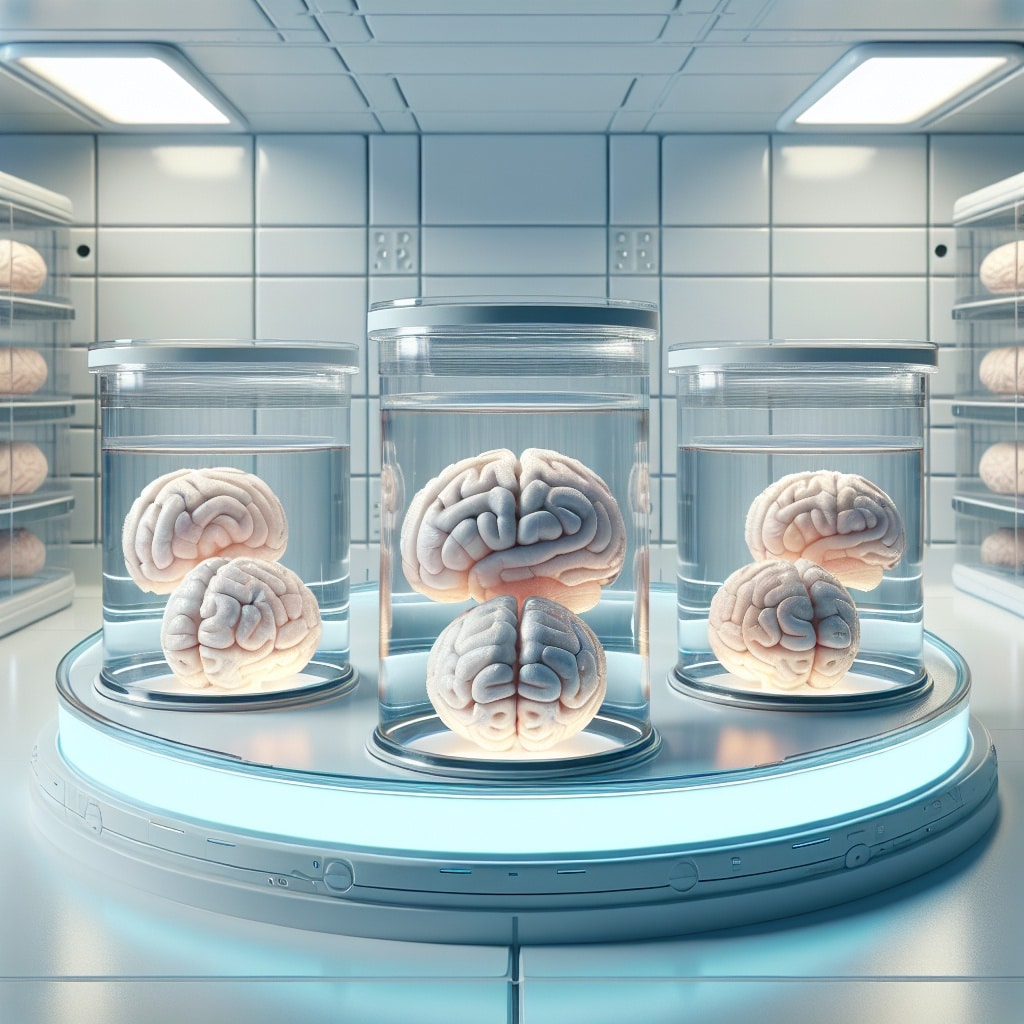(OPINION) When I first started researching this, I could hardly believe that it was true. A company in Switzerland known as “Final Spark” has constructed a bizarre hybrid biocomputer that combines lab-grown miniature human brains with conventional electronic circuits.
This approach saves an extraordinary amount of energy compared to normal computers, but there is a big problem. The lab-grown miniature human brains keep wearing out and dying, and so scientists have to keep growing new ones to replace them.
Stem cells that are derived from human skin tissue are used to create the 16 spherical brain “organoids” that the system depends upon. I realize that this sounds like something straight out of a really bad science fiction movie, but it is actually happening.
Scientists at Final Spark are calling their hybrid computer “the Neuroplatform”, and it is being reported that it only uses “a fraction of the energy required to power a traditional set up”…
Swiss tech startup FinalSpark is now selling access to biocomputers that combine up to four tiny lab-grown human brains with silicon chips.
This new bioprocessing platform, called the Neuroplatform, uses small versions of human brains to do computer work instead of silicon chips. The company says it can fit 16 of these mini-brains onto the Neuroplatform and use a fraction of the energy required to power a traditional set up.
The platform, currently adopted by nine institutions, integrates hardware, software and biology to construct a processing system that is energy-efficient and high-performing.
This “breakthrough” is being hailed as a way to save a gigantic amount of energy. But what about the lab-grown human brains that are being enslaved to run the Neuroplatform?
Each of the 16 mini-brains is made up of approximately 10,000 living neurons, and they are kept alive by a “microfluidics system that supplies water and nutrients for the cells”…
Rather than merely integrating biological concepts into computing, FinalSpark’s online platform ‘taps’ into spherical clusters of lab-grown human brain cells called organoids. A total of 16 organoids are housed within four arrays that connect to eight electrodes each and a microfluidics system that supplies water and nutrients for the cells.
The approach, known as wetware computing, in this case harnesses researchers’ abilities to culture organoids in the lab, a fairly new technology that allows scientists to study what are essentially mini replicas of individual organs.
During their short lives, the mini-brains are literally trained to perform certain tasks using a reward and punishment system… Researchers do this by training the organoids through a reward system. The organoids are rewarded with dopamine, the neurotransmitter responsible for pleasure (and addiction).
Meanwhile, as “punishment,” the organoids are exposed to chaotic stimuli, such as irregular electrical activity.
If the enslaved mini-brains do what they are supposed to do, they are rewarded with lots of pleasure. If the enslaved mini-brains do not do what they are supposed to do, they are hit with lots of “irregular electrical activity”.
In other words, these miniature human brains are tortured until they learn to obey. Reading that should literally make you sick.
What these scientists are doing is so incredibly evil. Final Spark claims that the miniature human brains use “a million times less power than their silicon counterparts”…
Swiss technology firm Final Spark has successfully launched Neuroplatform, the world’s first bioprocessing platform where human brain organoids (lab-grown miniaturized versions of organs) perform computational tasks instead of silicon chips.
The first such facility hosts the processing prowess of 16 brain organoids, which the company claims uses a million times less power than their silicon counterparts.
Final Spark hopes that their new “technology” will become the primary energy source for the AI revolution.
Because at this point training AI models uses a colossal amount of conventional energy…
According to Final Spark’s estimates, training the popular large language model GPT-3 that powered ChatGPT in its initial days alone consumed 10 GWh of energy. This is a whopping 6,000 times more energy than an average European city consumes in an entire year.
Replacing silicon chips with bioprocessors could lead to drastic energy savings. Final Spark allows research labs to experience the power of biological processors on the Neuroplatform.
To a lot of people out there, this is going to sound really great.
Final Spark insists that the processor that it has created will use a million times less energy compared to a normal silicon chip.
There is just one enormous problem.
The mini-brains keep dying and must be regularly replaced.
At first they would die “in just a few hours”, but now they are apparently living for up to 100 days…
Final Spark faced many challenges in its early years since the organoids would die in just a few hours. The company has worked on this shortcoming and improved its MEA systems to ensure that organoids live for 100 days.
These “organoids” are literally worked to death.
They are hooked up to electrodes and worked until they can work no more…
Final Spark has made working these varied components possible through an innovative setup called Multi-Electrode Arrays (MEAs), where the three-dimensional masses of brain tissue are placed. (READ MORE)










